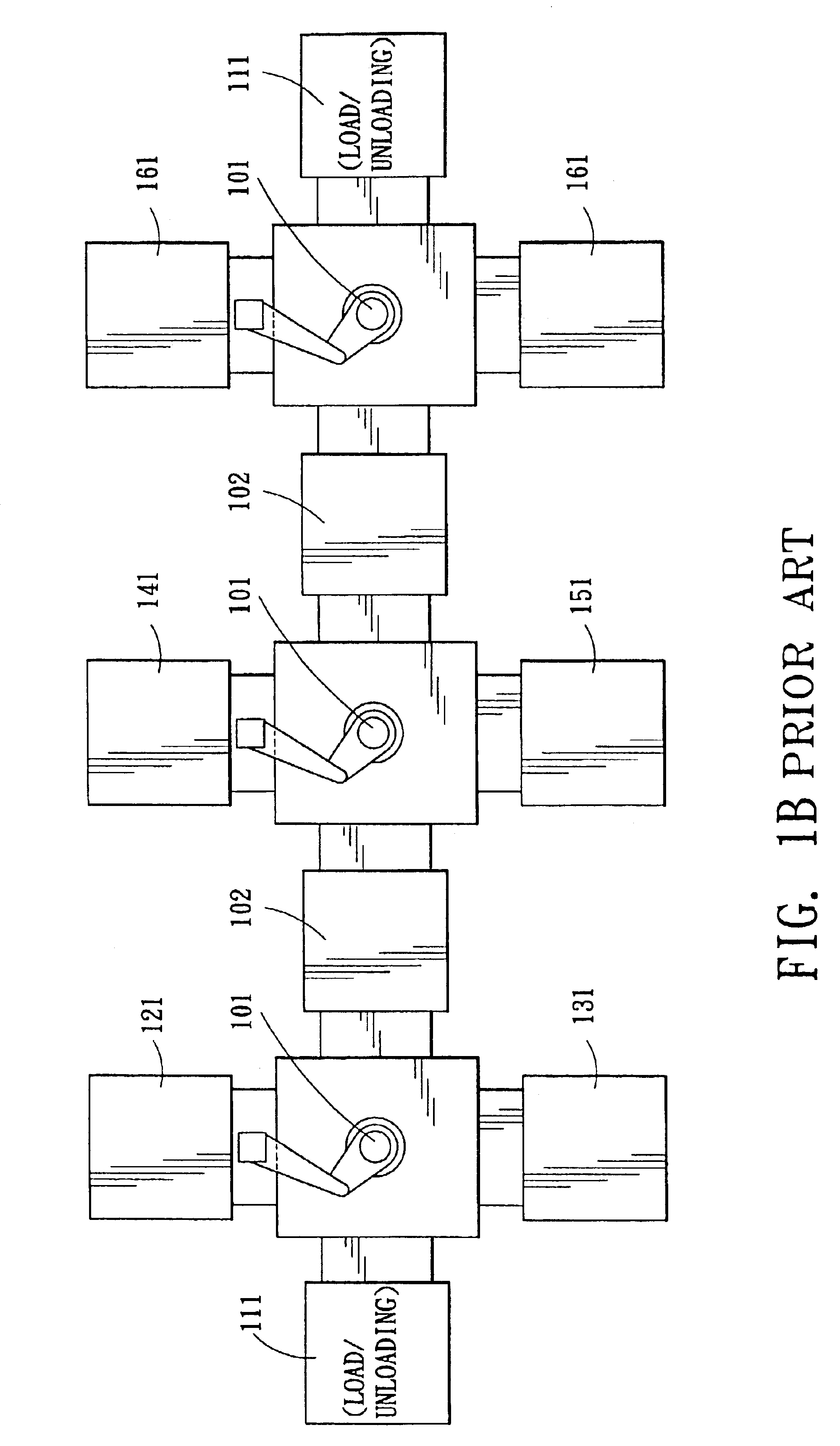Deposition apparatus for organic light-emitting devices
a technology of light-emitting devices and deposition apparatuses, which is applied in the direction of electrolysis components, vacuum evaporation coatings, coatings, etc., can solve the problems of large damage to organic light-emitting devices, the organic emitting materials of organic light-emitting devices are very sensitive to water and oxygen, and the damage of organic light-emitting devices is the major cause of damage, etc., to reduce the possibility of substrate pollution, shorten the transferring substrate time and reduce the possibility of pollution
- Summary
- Abstract
- Description
- Claims
- Application Information
AI Technical Summary
Benefits of technology
Problems solved by technology
Method used
Image
Examples
Embodiment Construction
[0024]In general, an organic light-emitting device mainly includes a substrate, an anode layer, an organic emitting layer, a cathode layer, and a passivation layer. The organic emitting layer includes a hole injecting layer, a hole transporting layer, a luminescent layer, an electron transporting layer, and an electron injecting layer. This invention mainly provides a deposition apparatus of organic light-emitting devices, which utilizes a substrate conveying system with a circular turntable shape to transfer a substrate into each chamber for deposition in turn. Therefore, each of the mentioned layers is formed on a plurality of substrates. An embodiment of the present invention will hereinafter be explained in detail.
[0025]Referring to FIGS. 2 and 3, a deposition apparatus for organic light-emitting devices includes a substrate conveying system 2 and chambers 21, 22, 23, 24, 25, and 26. In the current embodiment, the substrate conveying system 2 is a circular turntable shape, and t...
PUM
| Property | Measurement | Unit |
|---|---|---|
| temperature | aaaaa | aaaaa |
| thickness | aaaaa | aaaaa |
| luminescent | aaaaa | aaaaa |
Abstract
Description
Claims
Application Information
 Login to View More
Login to View More - R&D
- Intellectual Property
- Life Sciences
- Materials
- Tech Scout
- Unparalleled Data Quality
- Higher Quality Content
- 60% Fewer Hallucinations
Browse by: Latest US Patents, China's latest patents, Technical Efficacy Thesaurus, Application Domain, Technology Topic, Popular Technical Reports.
© 2025 PatSnap. All rights reserved.Legal|Privacy policy|Modern Slavery Act Transparency Statement|Sitemap|About US| Contact US: help@patsnap.com



